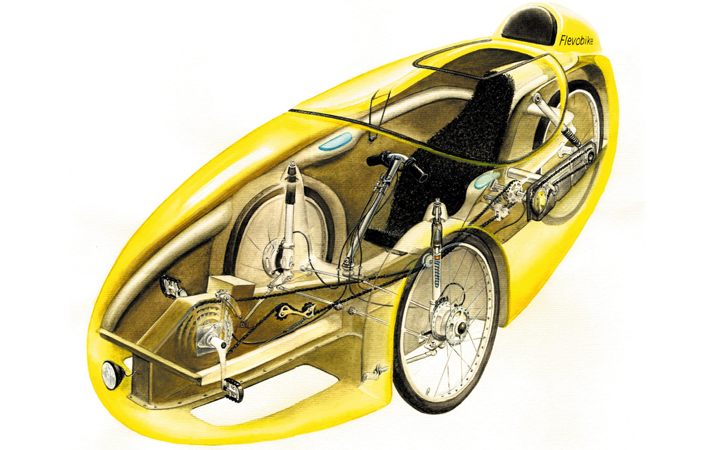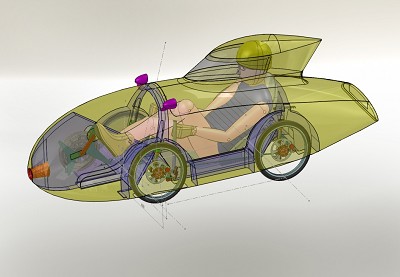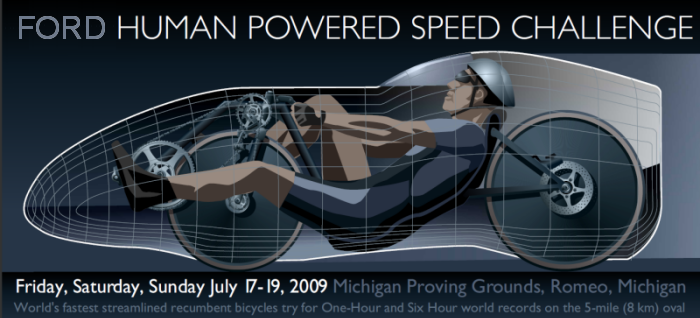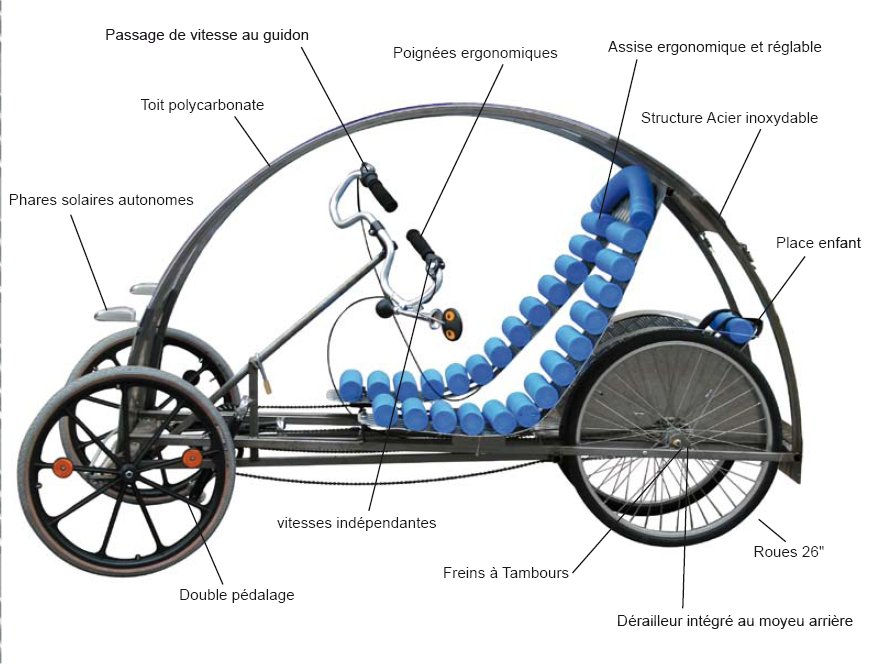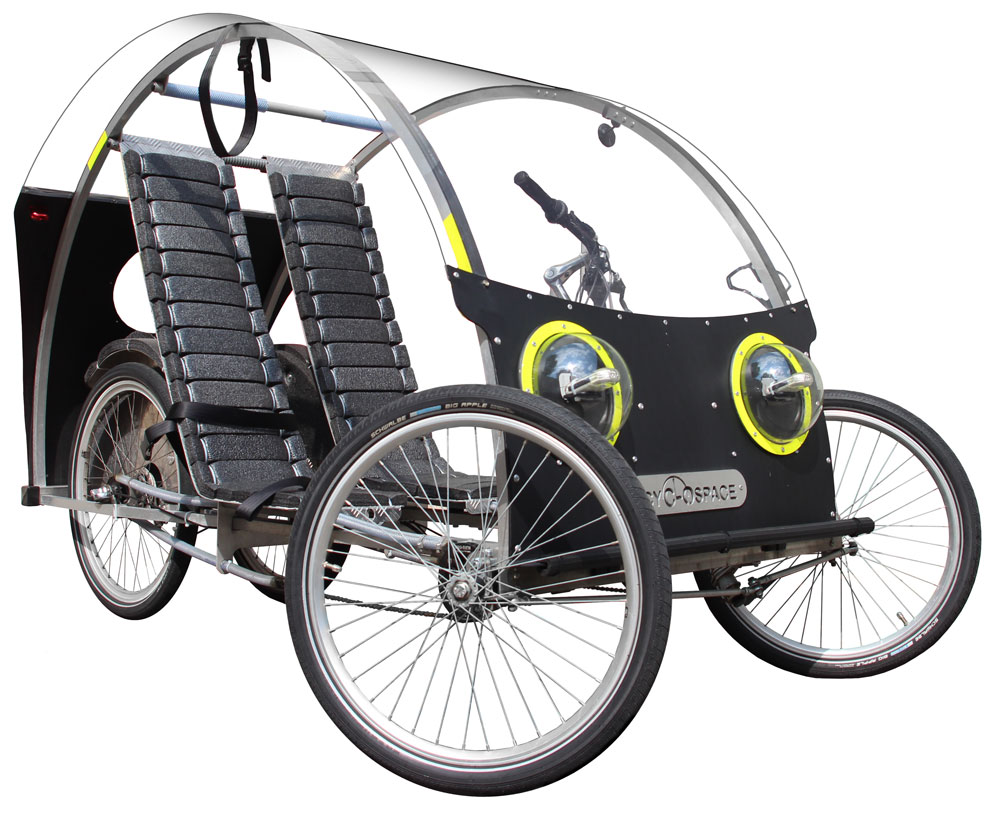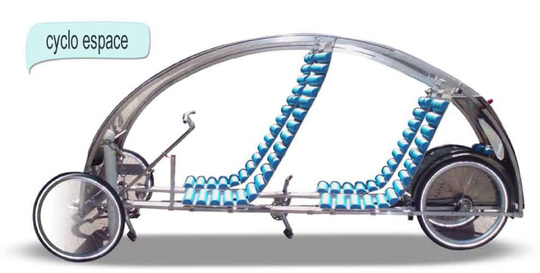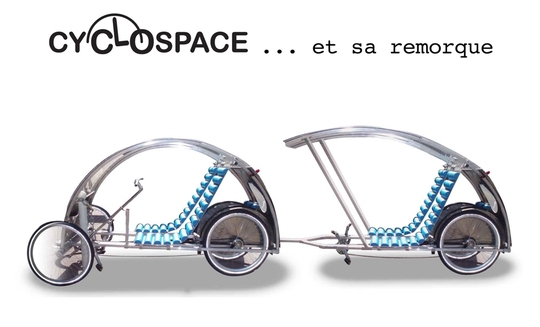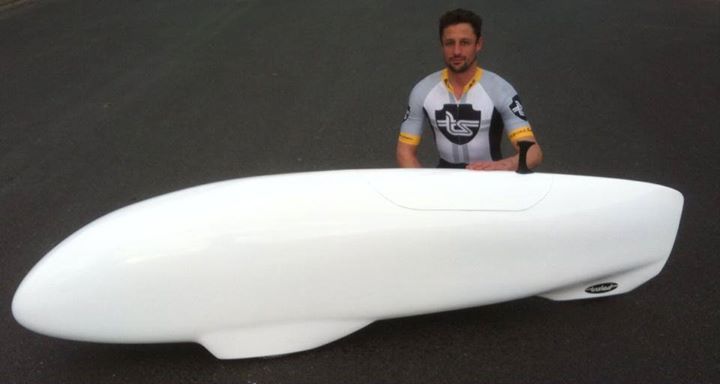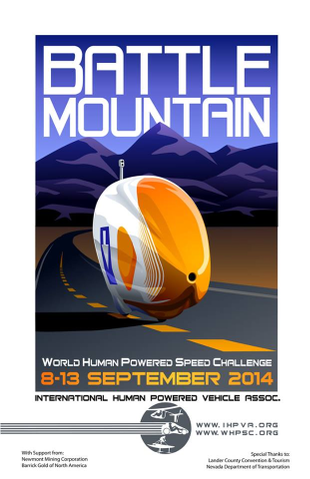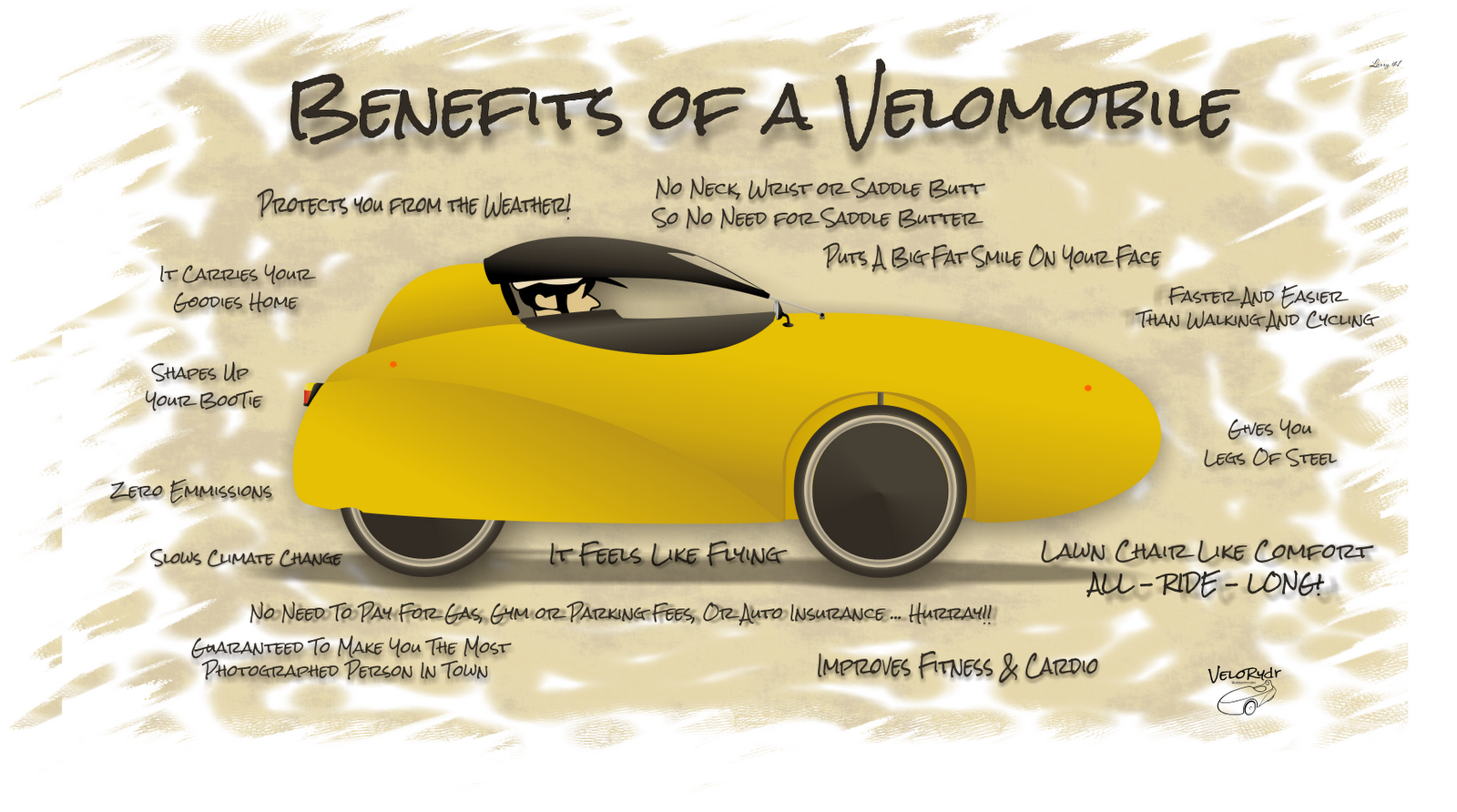Some time ago I showed a distant relative the drawing of the Quest velomobile, the same which Velomobiel.nl give to visitors and is also shown on the front page. This relative, who has seen the Quest in the wild, expressed surprise to learn that it is essentially a pedal powered trike. Since he had seen no visible wheels he had been under the impression that there was just some kind of two wheeler under the smooth body. This misperception got me thinking and impressed me that, to the uninitiated, it is not obvious what is hidden inside many a velomobile.
Similar to the short and humourous post about how velomobiles are perceived, one can take the view that hiding the contents can be both a good or a bad thing depending on where the external viewer is coming from. In his video presentation, Steve Mosca asserts, that having the pedaling concealed inside the body has helped the acceptance of the velomobile on the US roads whereas a regular, and exposed, cycle would receive a more hostile response. On the other hand, for the ignorant, not knowing, may well lead to a more negative view and perhaps prejudice a potential rider from learning more. I therefore decided it would be a good idea to collect a series of images to illustrate the “inside view.” This collection is presented below.
Perhaps following a similar line of thought, Graeme Obree designed his Beastie speed bike with a transparent fairing expressly so the observer could see the human engine at work underneath. 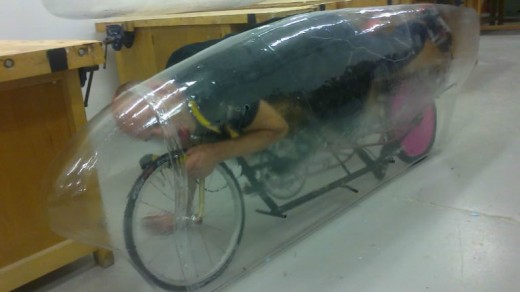 However for most velomobiles this is not possible, as the fibres in the Fibre Reinforced Plastic (FRP) body, render the material opaque. So in the physical world, apart from what can be seen through the canopy, all else is destined to remain a mystery. Leaving the physical world and turning to the illustrated and virtual worlds there is no such limitation, here artists, photo-manipulators and computer modellers are free to render what ever surface they like transparent.
However for most velomobiles this is not possible, as the fibres in the Fibre Reinforced Plastic (FRP) body, render the material opaque. So in the physical world, apart from what can be seen through the canopy, all else is destined to remain a mystery. Leaving the physical world and turning to the illustrated and virtual worlds there is no such limitation, here artists, photo-manipulators and computer modellers are free to render what ever surface they like transparent.
The Quest shown at the top of the front page was not the first such image. Prior to designing the Quest the good folks at Velomobiel worked at FlevoBike and were involved in the first FRP velomobile of this type, the Carbon or C-Alleweder later known as the Limit. A similar artist’s cut-away was produced, as shown below.
Even earlier, the success of the fledgling HPV movement in the US, and the particular successes of the Vector racing trike, caught the interest of the mainstream media. As a result the following see-through image of the Vector was produced, which graced the cover of the December 1983 issue of Scientific American.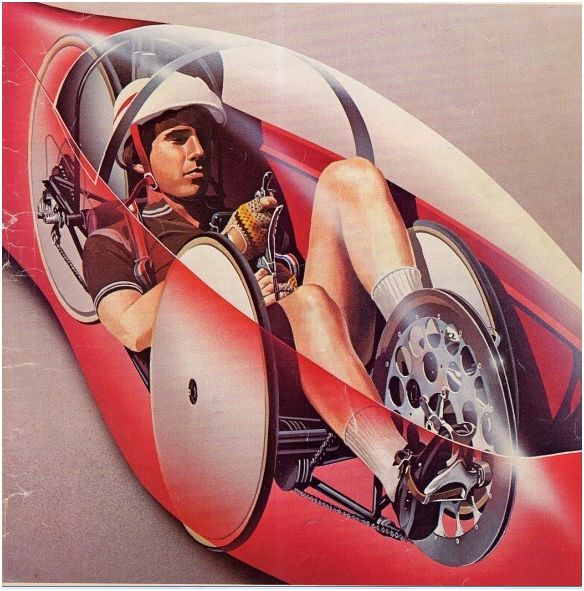
Going back even further it is possible to source drawings of machines from the pre-modern or first velomobile era. The first of these is the Velo Velocar by Mochet. The Velocar was the four-wheel HPV produced in France in some numbers during the inter-war years. The Velo-Velocar was the bicycle produced when Velocar was split in two, and was the precursor to the modern recumbent. Infamously banned by the UCI in 1934 because of its superior performance, Mochet went on to set unofficial records using a fully faired version as shown below.
Independent of the Mochet Velocars, but driven by similar need for practical transport and spurred on by the creative cycle developments of the time, a set of build-it-yourself plans for the Fantom were published in Sweden in the 1940s. Other Scandinavian countries beside Sweden had many home-builders and a few thousand of these plans were sold, a number of which were built and some survive till today. The arrangement drawing below gives an idea of the internal layout and proportions.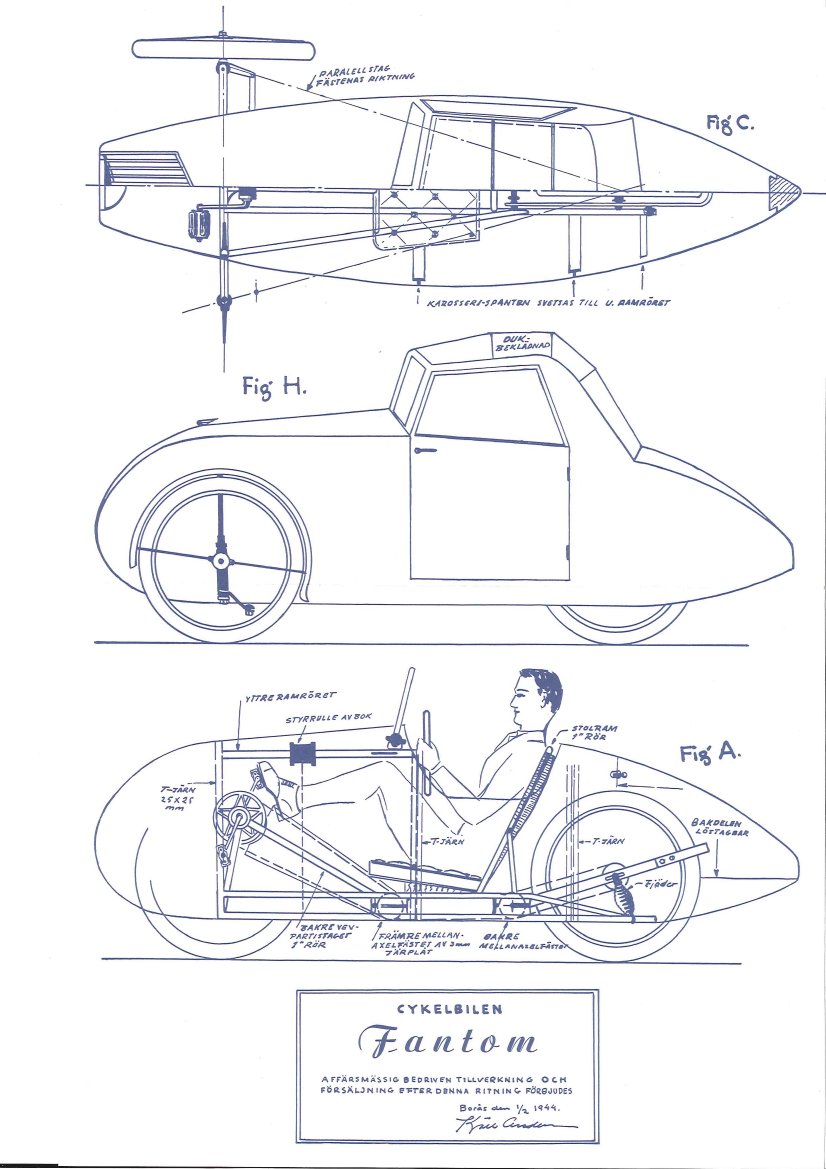
Returning to contemporary times, and to the power of photo editing software. Here we have the Borealis. Produced by Steve Schleicher in Canada, the Borialis is notable as being perhaps the first velomobile offered as an after-market kit to be fitted to a production trike. Designed to fit a number of models produced in the UK by ICE. Merging a couple of suitably aligned shots shows you just what it is like when body and trike are brought together.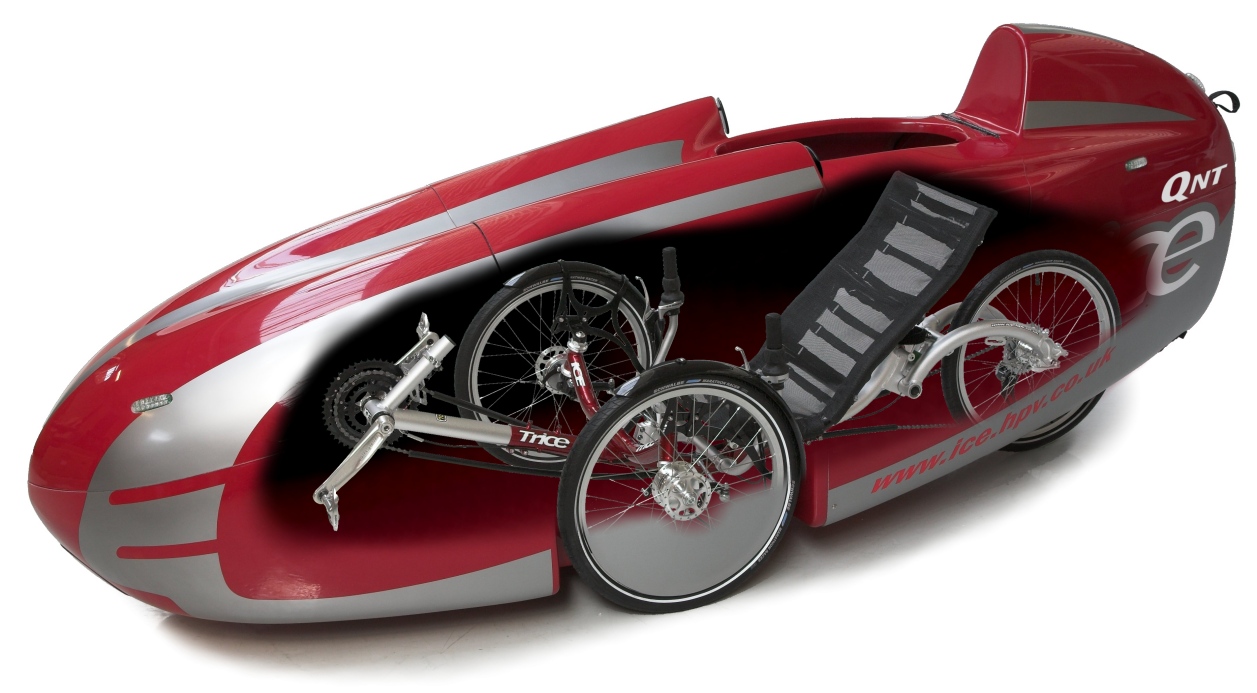
A similar composite image has been produced to illustrate the Rotovelo by Trisled. Although the Rotovelo is sold as a complete velomobile it has a similar structure in that the plastic body does not have enough rigidity to carry load which instead is carried on a trike frame.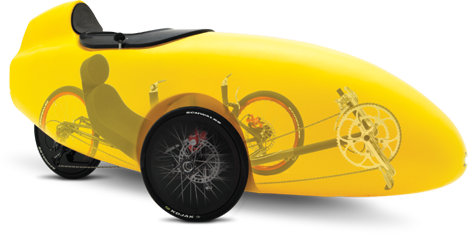
Returning to graphics and this time to the power of CAD. Miles Kingsbury put some serious effort into the design, development and production of his four wheel Quatro velomobile which first saw action in the 2011 ROAM event in the US. The CAD model was not only used for aerodynamic development but also to assess ergonomics and rider fitting. The following is taken from his Kingcycle page documenting the design.
Finally we come full circle and return to a speed bike and its representation of both bike and rider as the product of the artist’s mind. The following work of art by C Michel Lewis, an advert for a corporately sponsored HPV event in 2009, appears to depict a Varna speedbike riden by Sam Whittingham. Mr Whittingham of course held the world HPV speed record for a number of years, a record established in a Varna speedbike at the annual Battle Mountain event, an event for which Mr Lewis regularly provides the poster art.
The above collection serves to illustrate a range of velomobiles, both in terms of design purpose and development in time. It is not exhaustive. If any readers are aware of other similar illustrations please make use of the comments below to let us all know.


